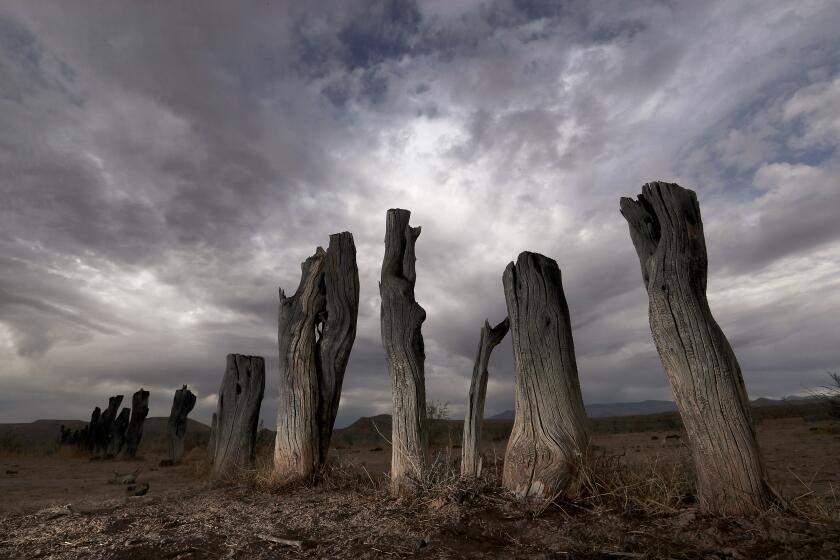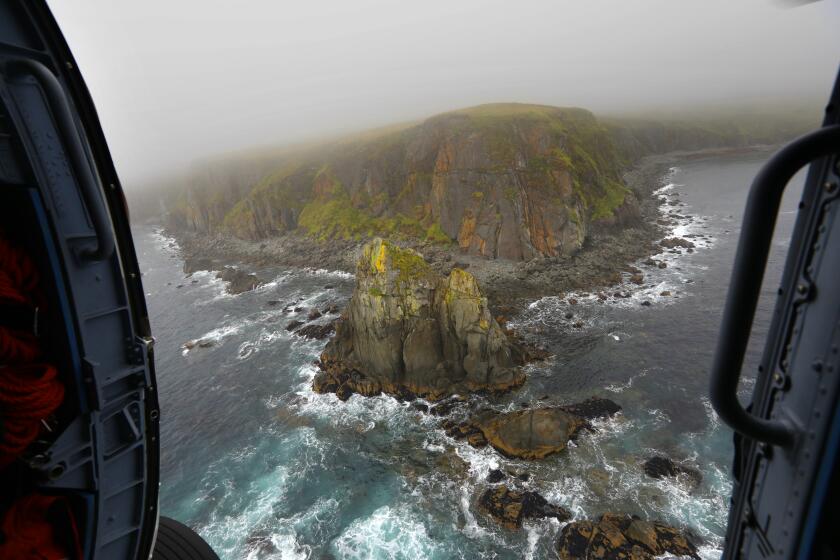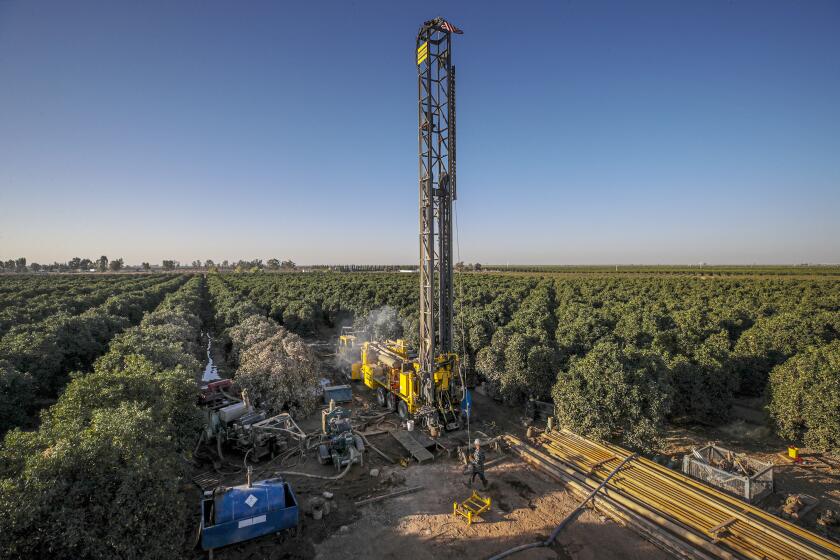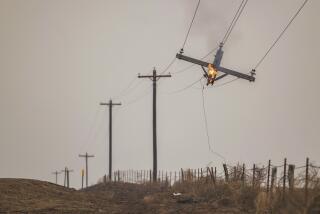Urgent action needed to address climate change’s catastrophic threats, U.N. report warns
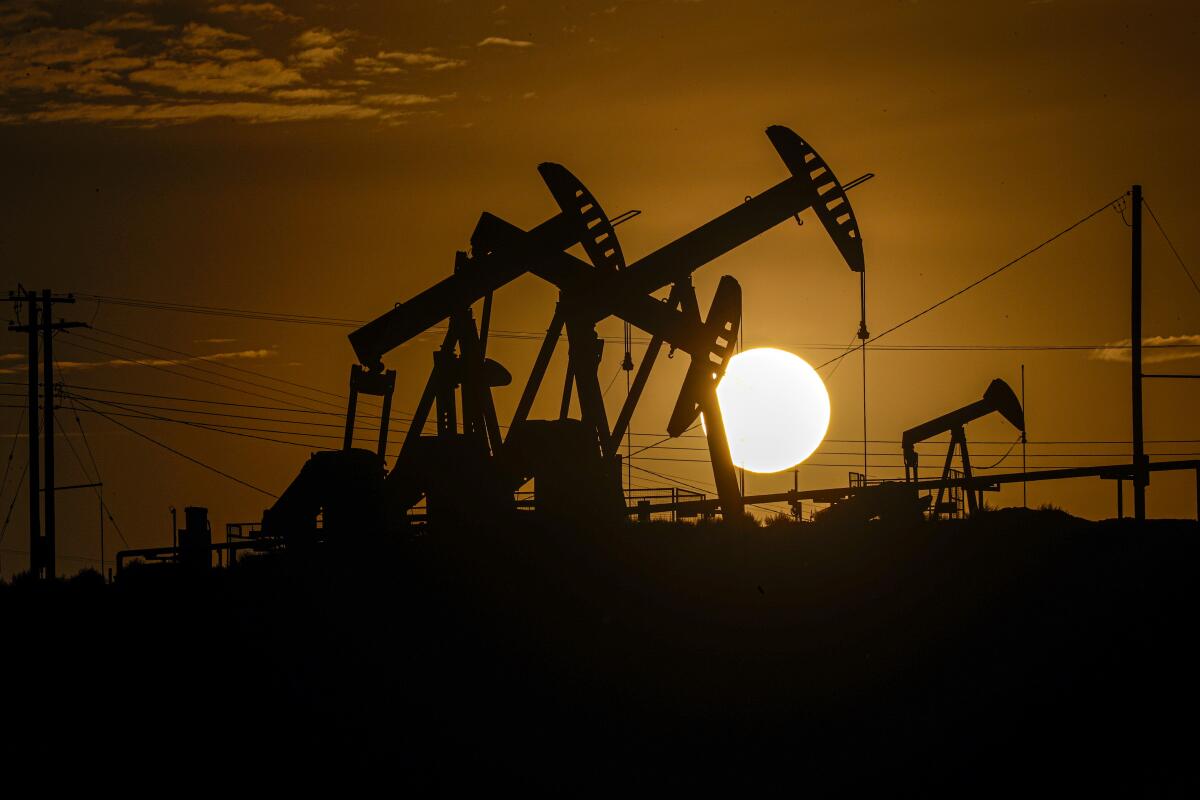
People’s lives and Earth’s ecosystems are at increasing risk of catastrophe if nations fail to quickly reduce emissions of planet-heating gases, according to a new United Nations report that urges humankind to scale up efforts to adapt and protect the most vulnerable.
As global warming continues to unleash deadly heat waves, intense droughts, floods and devastating wildfires, researchers from 67 countries called for urgent action to address the crisis. They said many of the dangerous and accelerating effects can still be reduced, depending on how quickly the burning of fossil fuels and emissions of greenhouse gases are curbed.
“People and the planet are getting clobbered by climate change. Nearly half of humanity is living in the danger zone — now. Many ecosystems are at the point of no return — now,” U.N. Secretary-General António Guterres said. He called the report “an atlas of human suffering” and an indictment of failed leadership. “The world’s biggest polluters are guilty of arson of our only home.”
The report, which was released Monday by the Intergovernmental Panel on Climate Change, or IPCC, documents how climate-driven weather extremes have exposed millions of people to water shortages, worsening disasters and acute food insecurity, and how many of the planet’s surviving species are vulnerable to global warming.
The scientists said the fates of natural ecosystems and human populations are interconnected, that safeguarding nature is critical to addressing climate change and that about 3.3 billion to 3.6 billion people worldwide are highly vulnerable.
“The scientific evidence is unequivocal: Climate change is a threat to human well-being and the health of the planet,” said Hans-Otto Pörtner, co-chair of the IPCC Working Group II, which prepared the report. “Any further delay in concerted global action will miss a brief and rapidly closing window to secure a livable future.”
Read all of our coverage about how California is neglecting the climate threat posed by extreme heat.
The report, which was prepared by 270 authors and approved by 195 member governments, focuses on climate change’s effects on people and nature, and examines vulnerabilities and ways of adapting to ensure the planet’s survivability for future generations. The researchers said populations especially at risk are spread across the globe and include many in Africa, Asia, Central and South America, as well as island nations.
In Central America, for example, farmers have been struggling with more intense rainfall as well as worsening dry spells, said Edwin Castellanos, an IPCC author from Guatemala.
“They are losing their crops as the rainfall does not come to water their fields when expected. Adaptation efforts need to address these issues for all,” Castellanos said. “Putting vulnerable groups and countries at the heart of the decision-making process on how we respond to climate change can make societies more resilient. We need to remember that we are part of the nature that surrounds us, and not its owners.”
Report authors said adaptation efforts can include restoring natural floodplains to reduce flood risks, planting trees to cool urban areas, improving cropland management, improving water-use efficiency, strengthening health programs to prepare for extreme heat, and conserving mangroves and other wetlands as natural defenses against coastal flooding.
Castellanos and other scientists noted that in 2009, wealthy countries committed to mobilizing $100 billion per year to address the needs of developing countries by 2020, a goal they have yet to achieve.
By 2050, that cost could reach $295 billion per year, researchers said.
The West is experiencing its most severe megadrought in a millennium, according to a new study. Scientists say climate change is playing a major role.
With the increase in global average surface temperatures of about 1.1 degrees Celsius (2 degrees Fahrenheit) so far, damaging effects are occurring more rapidly and with greater severity than had been projected previously, researchers said. They called for governments, businesses and individuals to take rapid steps to meet the goal of limiting warming to 1.5 degrees Celsius (2.7 degrees Fahrenheit) above pre-industrial levels, which they said would “substantially reduce projected losses and damages” for humans and ecosystems.
But achieving that goal requires cutting greenhouse-gas emissions 45% by 2030 and moving toward net-zero emissions by 2050, Guterres said. Unfortunately, the world is moving in the opposite direction, with emissions on track to increase about 14% within a decade. Guterres urged the wealthy countries to shut down coal-fired power plants and accelerate the transition to clean energy.
The scientists stressed there will be grave consequences if the world stays on the current trajectory of rising temperatures. If the atmosphere warms 2 degrees Celsius (3.6 degrees Fahrenheit), they said, regions that depend on snowmelt could see a 20% drop in water availability by midcentury, which would devastate agriculture and leave many suffering from food shortages and hunger.
They said climate change has already “caused substantial damages, and increasingly irreversible losses” in ecosystems on land, in freshwater and in the oceans, including mass die-offs of trees in extreme droughts and warm-water bleaching events that have ravaged coral reefs.
Scientists are seeing changes off Alaska that have never been documented before, as warming upsets a vast ecosystem and one of the world’s vital fisheries.
About half the species that have been assessed worldwide have shifted toward the poles or to higher elevations, the report said. The heating of the planet has driven hundreds of local losses of species and has accelerated the pace of extinctions.
Camille Parmesan, lead author of a chapter on ecosystems, said ecological degradation through forest insect pest outbreaks, major wildfires, the thawing of permafrost and the drying of peatlands are “starting to weaken the ability of the biosphere to act as a sink of greenhouse gases that humans are emitting.”
A key points that stands out in the science, Parmesan said, is that humans’ health and resiliency depend on natural ecosystems.
“We’re seeing that keeping climate change down to the lower levels is going to rely on getting natural systems in better shape to suck up carbon, because emissions reductions alone are not going to do it,” Parmesan said.
The researchers said that protected areas worldwide cover less than 15% of the land, 21% of the freshwater and 8% of the ocean. Recent analyses have suggested conserving 30% to 50% of the Earth’s land and waters to maintain their resilience.
Extreme heat waves have killed growing numbers of people in recent years, the report said, and the changing climate has taken a worsening toll on people’s health in various ways, including expanding areas where diseases like dengue can spread and bringing mental health challenges to those experiencing trauma or anxiety about the planetary crisis. Severe storms and flooding have also struck with more intensity, claiming lives and displacing people.
Despite a California law intended to end over-pumping of aquifers, a frenzy of agricultural well drilling continues in the San Joaquin Valley.
“People are suffering and dying right now from climate change, and we’re not seeing an investment to try and make sure that we are prepared for an even warmer future,” said Kristie Ebi, lead author of the report’s chapter on health and a professor at the University of Washington. She said there are various effective options for adapting and helping communities better prepare, but very little adaptation funding has gone toward health.
Ebi referred to the deadly 2021 heat wave in the Pacific Northwest and said it underscores the need to prepare for more such extremes.
“Nobody needs to die in a heat wave,” Ebi said. “It’s critically important to start looking at these increases in extreme weather and climate events, looking at the people in harm’s way, mostly the poor and the marginalized, and making sure that efforts are undertaken to protect and promote health and well-being in those communities.”
Ebi and other researchers noted that the burning of coal and oil causes hazardous air pollution that leads to respiratory diseases and premature deaths. So cutting that pollution, they said, would bring major health benefits, and every increment of reducing carbon emissions helps dial down global warming.
“Every action matters,” Ebi said, whether that’s in transportation, energy efficiency or well-insulated buildings. “There are millions of ways we can reduce our greenhouse gas emissions.”
The scientists said global warming has already worsened water scarcity, harmed food production and battered cities and infrastructure.
They said cities, where more than half the world’s population lives, face climate risks but also present big opportunities for climate action, such as creating non-polluting transit systems and finding solutions to cool neighborhoods where paved areas are trapping heat and creating the so-called urban heat-island effect.
The report says many people in the world’s rural areas are very vulnerable to climate change, and that social programs, “including cash transfers and public works programs,” can be used to help as part of adaptation efforts.
The report, part of the Intergovernmental Panel on Climate Change’s Sixth Assessment Report, examines climate adaptation options and says considering traditional Indigenous knowledge and local knowledge is vital in developing solutions. The authors said because climate change exacerbates existing inequalities, decisions and funding should focus also on equity and justice, and reduce risks for low-income and marginalized groups that are most vulnerable.
While taking steps at the local level to become more resilient, the researchers said, the world must also address the losses and damages being caused by the warming that has already occurred.
“For low-lying and coastal communities, the increasing intensity of tropical storms and hurricanes combined with sea level rise will result in losses and damages, despite our best efforts to adapt,” said Adelle Thomas, a report author from the Bahamas. “And unfortunately, these negative impacts of climate change have disproportionate effects on those that are least able to respond, the poorest and most vulnerable communities.”
The researchers said underlying reasons for vulnerability include economic inequity, colonialism and marginalization related to poverty, gender or ethnicity, and that many Indigenous peoples are especially vulnerable. They said those who suffer in climate-fueled droughts, floods and storms often include people who live in poverty without basic services, as well as people who depend on subsistence farming or fishing.
From 2010-20, the report said, deaths from floods, storms and droughts were “15 times higher in highly vulnerable regions, compared to regions with very low vulnerability.”
In North America, the researchers said, climate change has already affected agricultural productivity and is projected to reduce yields of crops such as wheat, corn and soybeans.
In the western U.S. and Mexico, the report said, heavy exploitation of limited water supplies has compounded water risks, while intensified droughts and diminished snowpack will increase water scarcity, particularly in regions with extensive irrigated agriculture.
In recent research, other scientists have found that western North America, from Montana to Northern Mexico, has been suffering through the driest 22-year period in at least 1,200 years, and that the “megadrought” is being significantly worsened by higher temperatures with climate change.
California is in a third year of extreme drought, and researchers have estimated that the state’s agriculture industry last year shrank by an estimated 8,700 jobs while 395,000 acres of cropland were left dry and unplanted because of the lack of water.
The IPCC report says climate change is expected to continue to shift the suitable areas where crops will grow in North America, and will continue to “intensify production losses of key crops.”
“We find that every increased amount of warming will increase the risk of severe impacts,” said Rachel Bezner Kerr, a professor of global development at Cornell University and lead author of a chapter on food. “And so the more rapid we can take strong action to reduce greenhouse gas emissions, the less the severe impacts will be.”
By detailing the latest science, the report sets the stage for the next U.N. climate conference, which will be held in November in Sharm El-Sheikh, Egypt.
IPCC Chair Hoesung Lee said the report is “a dire warning about the consequences of inaction” that lays out a “blueprint for our future on this planet.”
John F. Kerry, President Biden’s special envoy for climate, said the report shows the major effects that are already occurring, and “the terrible risks to our planet if we continue to ignore science.”
“The question at this point is not whether we can altogether avoid the crisis — it is whether we can avoid the worst consequences,” Kerry said in a statement. “Even as the world must continue to do everything possible to limit global temperature rise, both in the short and long term, we must also prepare for the impacts that will arrive with that warmer planet.”

